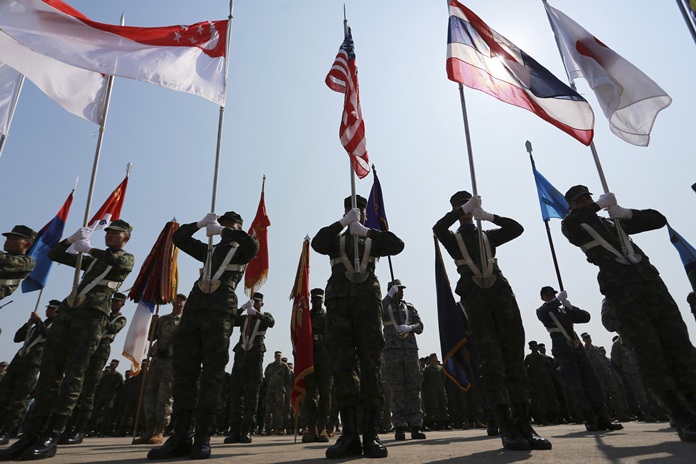
U-Tapao Air Base (AP) — Thailand and the United States downplayed the presence of a Myanmar military officer at the opening Tuesday of the largest annual joint military exercise in Southeast Asia.
 Myanmar’s military has been accused of massive human rights violations in its crackdown on the Rohingya Muslim minority, who have fled by the hundreds of thousands to neighboring Bangladesh. U.S. lawmakers had demanded Myanmar’s exclusion from the exercise.
Myanmar’s military has been accused of massive human rights violations in its crackdown on the Rohingya Muslim minority, who have fled by the hundreds of thousands to neighboring Bangladesh. U.S. lawmakers had demanded Myanmar’s exclusion from the exercise.
“The truth is Myanmar is not a participant nation,” U.S. Ambassador to Thailand Glyn T. Davies told reporters at in the Cobra Gold exercise in eastern Thailand. “They’re not part of the exercises here.” He did not explain the Myanmar officer’s attendance.
Thai Gen. Thanchaiyan Srisuwan acknowledged inviting Myanmar to the opening ceremony. However, Myanmar’s flag was not flown at the ceremonial opening. It’s believed Thailand invited Myanmar to send three personnel though only one appeared to be attending.
In Washington last week, both Republican and Democrat members of congress criticized the invitation to Myanmar. Sen. John McCain, the Republican chair of the Senate Armed Services Committee, told The Associated Press “militaries engaged in ethnic cleansing should not be honing their skills alongside U.S. troops,” a reference to accounts of atrocities committed by Myanmar troops.
A U.S. statement said 11,075 service members from 29 countries are taking part in this year’s exercise, with Thailand, the U.S., Singapore, Japan, South Korea, Indonesia and Malaysia the seven main participants.
It said the aims of the exercise are to enhance security cooperation, develop peacekeeping forces and maintain readiness for humanitarian aid and disaster relief missions.
The exercise includes humanitarian components, such as evacuation drills, as well as traditional military exercises such as amphibious landings.
Disaster relief has assumed a high profile in recent years, especially after the 2004 Indian Ocean tsunami that killed 230,000 people in 14 countries. Multinational forces mobilized for relief efforts after that crisis, as they did again on a more limited scale after 2008’s Cyclone Nargis devastated Myanmar, killing upward of 130,000 people.
Davies, in an indirect reference to such crises, told reporters that “It’s very important that everyone from around the region have an eye on what’s happening here and to some extent to be part of it, but I’ll come back to what I said earlier that Burma (Myanmar) is not a participating nation.”





